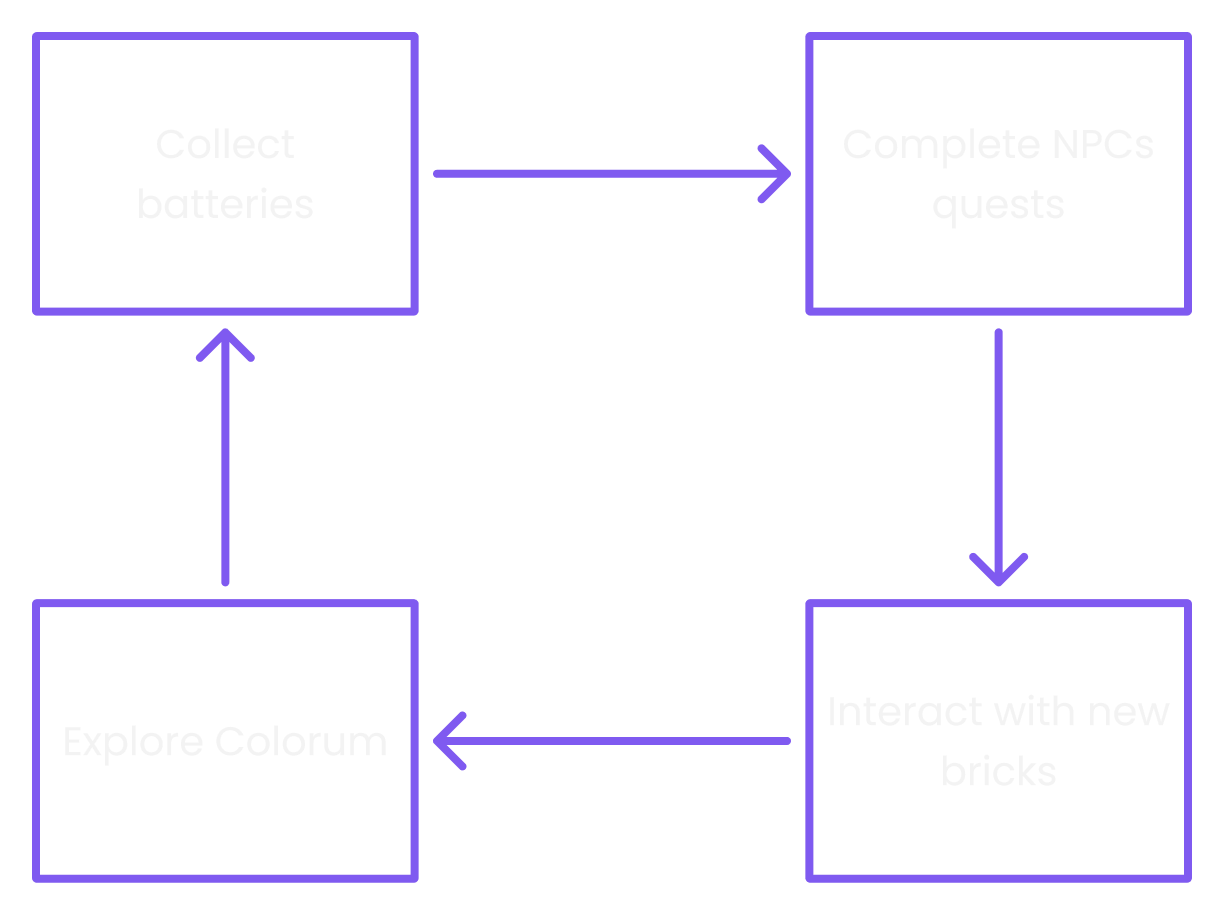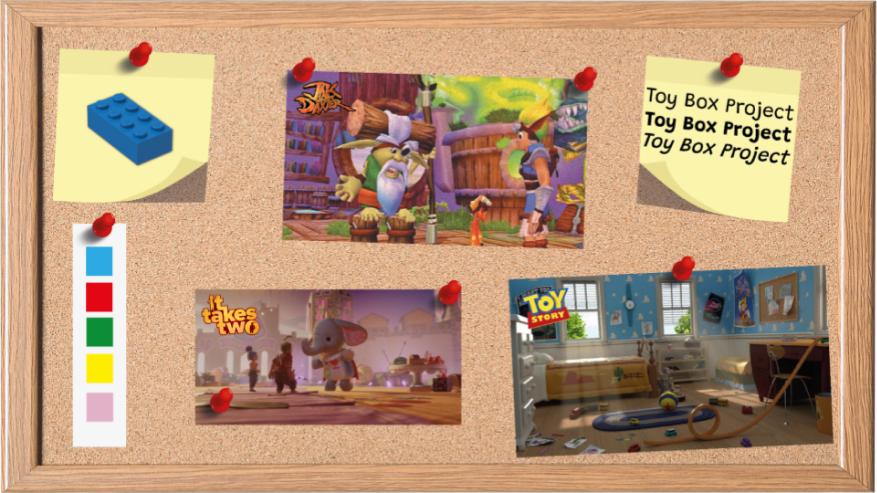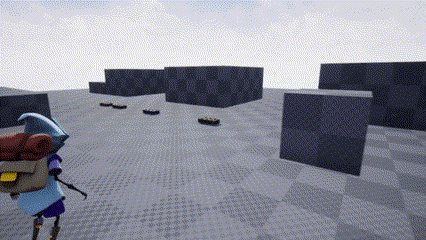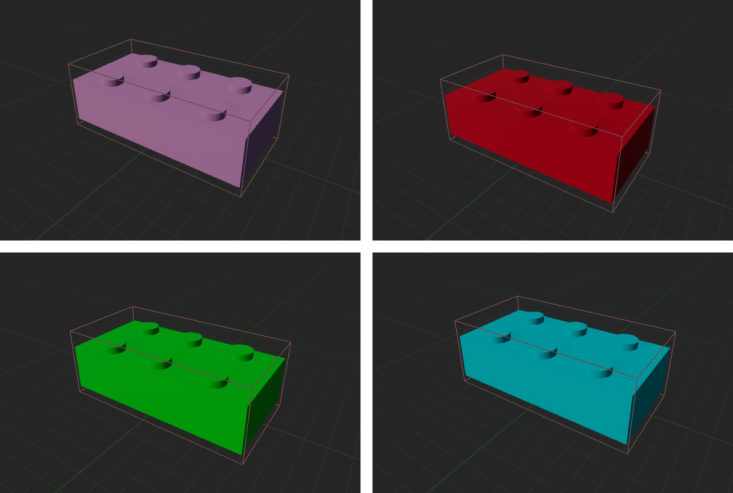Game Overview
- Summary: 3D platform shooter set in a child's bedroom
- Roles: Level Designer, Game Designer and Programmer
- Project Type: Academic
- Software: Unreal Engine 4
- Duration: May 2022 - Oct. 2022
- Team Size: 3


While researching the genre, I decided to focus on the first chapter of the Jak and Daxter trilogy.
Then, when the game setting was already decided, I took inspiration from Jak eco to develop the color-driven brick mechanic.
It consisted on being able to give or take away from the bricks properties derived from a child's imagination. For example, red bricks could be lava or not.

I decided to use the shooting system initially implemented only for the combat also for the interaction with the bricks. In this way we avoided adding too many mechanics.
I designed the enemies trying to make them very different from each other while maintaining simple behaviours.

I designed the first level with a linear structure and a lot of safe zones where players can experiment mechanics without being punished.
I built environmental worldbuilding around an NPC which introduce the player to the game.
For example, the first air duct half is much dirtier than the second one since it is no longer used.
I tried also to convey the sense of wonder through the curvatures and the air duct end.
Once out of the duct the level design philosophy completely changes. In fact, players are now in an open area to explore in the order they prefer.
The experience could be very different according to the brick you can interact with.
For example, the other level I designed has a maze under the bed that can be broken by interacting with blue bricks, but, if you have not already unlocked the blue power, you have to find a way out without any help.
I tried to put each enemy in the best possible spot to make it even more dangerous. Obviously color powers can help players to better handle the encounters with the evil mages.
About that, the amount of batteries collectible without powers was designed in order to make players able to unlock at least the green power, which can be very useful against the teleporter mages above the pillows.
In conclusion I wrote also the dialogues for all the characters in my levels.
I create all the blueprints necessary to make the game work, excluding what concerns the UI system.
As my first time on Unreal Engine I struggled a lot with the game optimization, especially due to the colored bricks.
In fact, in a first iteration players would be able to interact individually with each brick, then I necessarily had to change that by grouping close bricks into a single instance.

Too much freedom may bore the player. We tried to leave the player as free as possible, but without a clear objective the interest in the game can be easily lost.
Feedbacks are essential to understand what it is happening.
For example, there is no particle notifying that an enemy is healing with a green brick, as a consequence some players have not understood how defeat enemies that are on top of those bricks.
In order to make a game enjoyable even with a controller, it is necessary to take additional steps, such as making aiming easier.
The UI must be designed in advance and cannot simply be "added" at the end.
As game designers we give a lot of importance to the gameplay, but we have learned that you have to do detailed documentation of how all the systems work with each other before jumping into the engine.
How to design 3D levels.
This was our first 3D game and it makes us aware of the importance of elements such as the camera, the lights and the size of things.